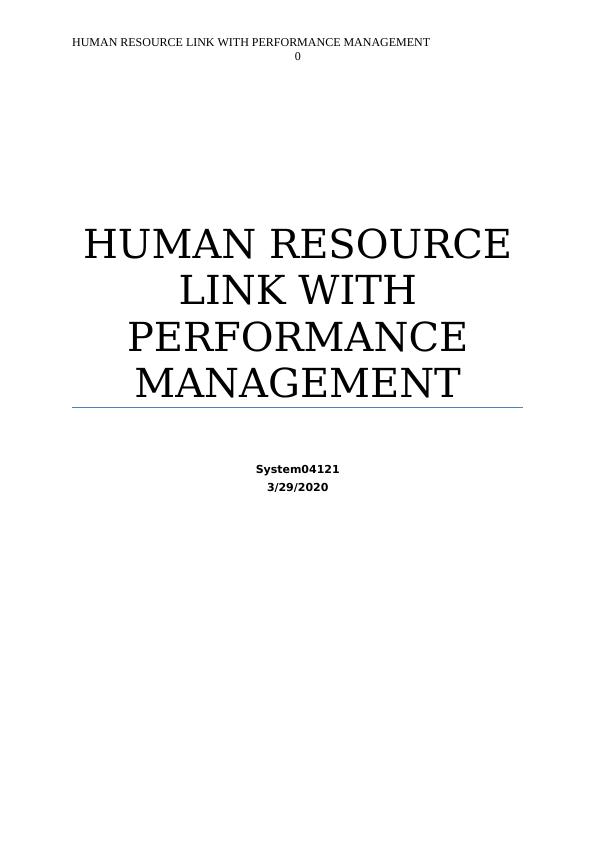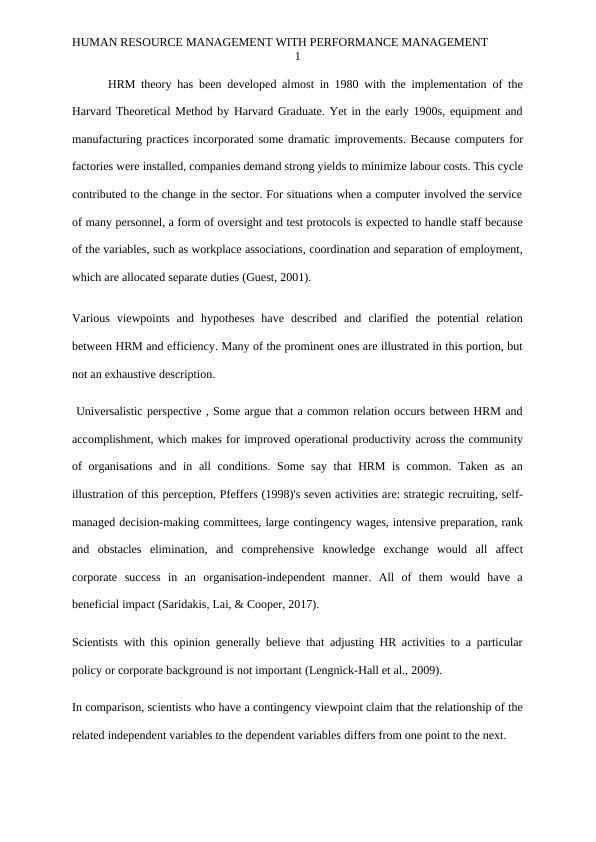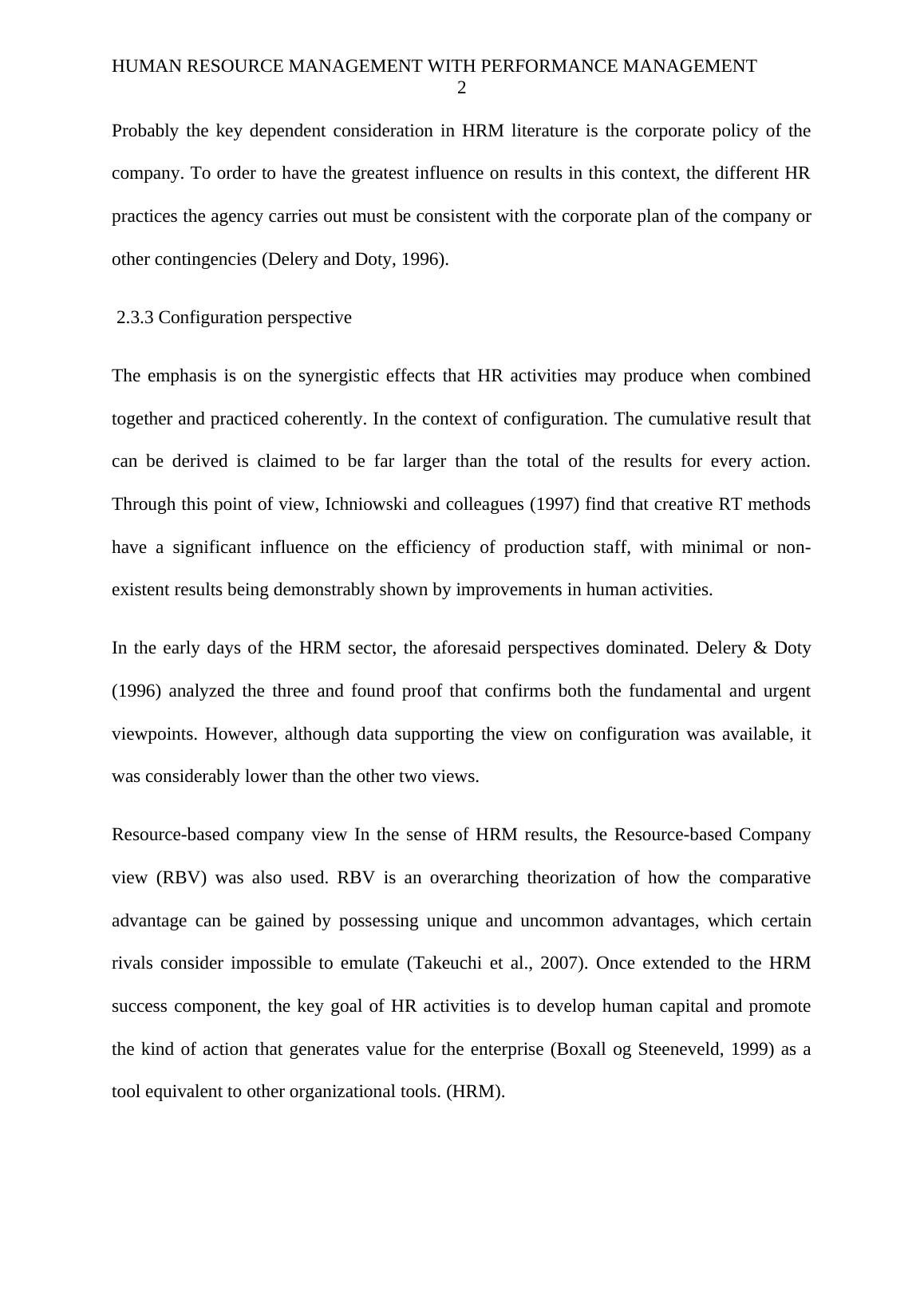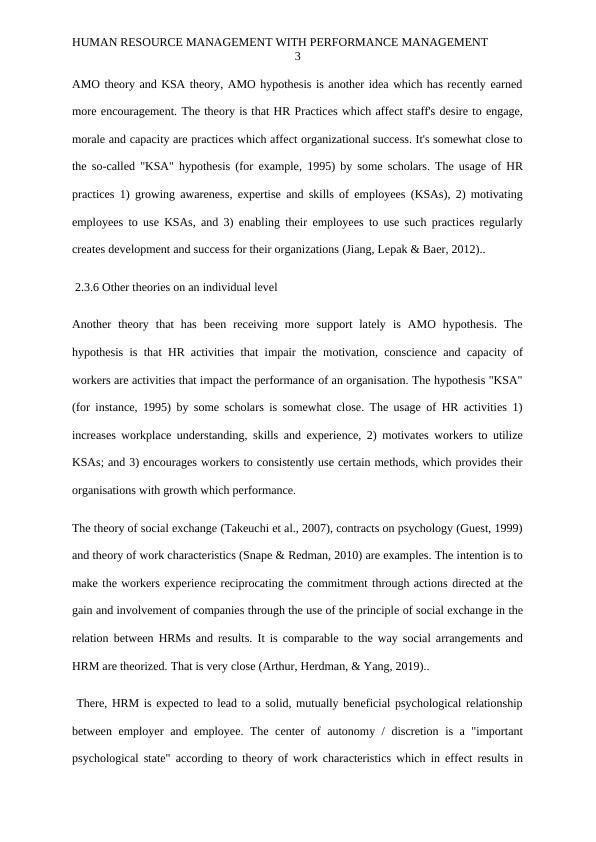Human Resource Link With Performance Management
This article provides an overview of empirical research articles on the linkages between HRM and performance, analyzing the design of the studies, theoretical frameworks, conceptualization and operationalization of HRM and performance, and control and contingency variables. It highlights disparities and commonalities in the treatment of these components and suggests trends for future research.
Added on 2022-09-06
Human Resource Link With Performance Management
This article provides an overview of empirical research articles on the linkages between HRM and performance, analyzing the design of the studies, theoretical frameworks, conceptualization and operationalization of HRM and performance, and control and contingency variables. It highlights disparities and commonalities in the treatment of these components and suggests trends for future research.
Added on 2022-09-06
End of preview
Want to access all the pages? Upload your documents or become a member.




